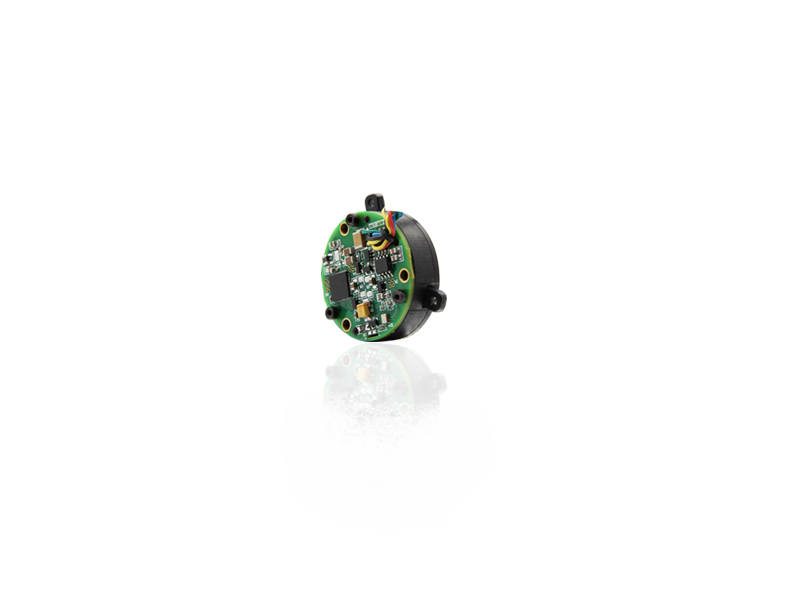Brief introduction to the working principle of magnetic rotary encoder
Release time:
2023-03-27
The core structure of the single-magnetic rotary encoder is a permanent magnet above, a Hall chip below, and the four shadows on the chip are Hall devices. The Hall effect shows that under the action of the permanent magnet magnetic field, the 4 Hall devices can detect the corresponding voltage value, if the permanent magnet rotates at a constant speed, the voltage waveform detected by the 4 Hall devices is 4 sinusoidal waveforms, and the phase difference is 90 degrees. Therefore, depending on the size of the return voltage, the magnet angle value can be obtained.
Single magnetic rotary encoder
The core structure of the single-magnetic rotary encoder is a permanent magnet above, a Hall chip below, and the four shadows on the chip are Hall devices. The Hall effect shows that under the action of the permanent magnet magnetic field, the 4 Hall devices can detect the corresponding voltage value, if the permanent magnet rotates at a constant speed, the voltage waveform detected by the 4 Hall devices is 4 sinusoidal waveforms, and the phase difference is 90 degrees. Therefore, depending on the size of the return voltage, the magnet angle value can be obtained.

When the chip is turned on, the voltage value at that location can be returned, so the current position can be recorded even if there is no battery. The chip can be used as an absolute encoder (using serial bus output) or incremental encoder (ABZ). A typical case can be found in AS5047 produced by Microelectronics Austria.
2. Multi-pole encoder
Unipolar encoders are usually axial and require the encoder to be mounted at the end of the shaft being measured. This mounting method does not meet the blank row requirements of robot joints, so it works on an axial multipole encoder.
Multi-pole singleturn rotary encoder
Multipole singleturn encoders mainly consist of a toroidal magnetic grid and a sensor. The disks are magnetized, and alternating magnetic poles are arranged in Wonju. When operating, the lower sensor detects changes in the magnetic field as the magnetic grid rotates and converts this information into a sine wave. The encoder is an incremental ABZ output, typical examples are AS5311, AS5304, etc. produced by Microelectronics Austria.
Multipole multi-ring encoders
Multipole rotary encoders mainly consist of a ring and a readout head. A typical example is the Lennisao AKSIM series of absolute hollow magnetic encoders for UR robot joints. Among them, ring magnets use an encoding scheme called Nonius principle. In particular, ring magnets consist of two concentric circles, alternately arranged in NS orbits. The two orbits have different poles, and there is usually a difference in the number of poles. For example, the outer orbit can have 32 magnetic poles and the inner orbit can have 31 magnetic poles. With the disk at the center, the polar alignment between the inner and outer tracks is constantly changing. The offset angle between the inner and outer poles is unique at the specified location around the disk.
When the encoder is operating, the two magnetic field sensors on the read head generate sinusoidal signals as they pass through the N and S stages, respectively. The mutual movement between these two signals is unique to each location around the disk. The read head converts this analog phase shift into digital signals, each corresponding to a unique rotation position on the magnetic ring.
3. Conclusion
The output signal strength of a magnetic rotary encoder is proportional to the spacing of the magnetic poles, so the resolution of a magnetic rotary encoder cannot be as high as that of an optical encoder. But on the other hand, optical encoders are susceptible to dust, and other external environmental factors, and the grating is very fragile, and installation and maintenance are difficult. Therefore, magnetic rotary encoders are a good alternative to optical encoders.
previous page
Related news


